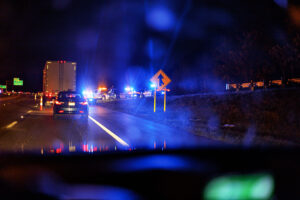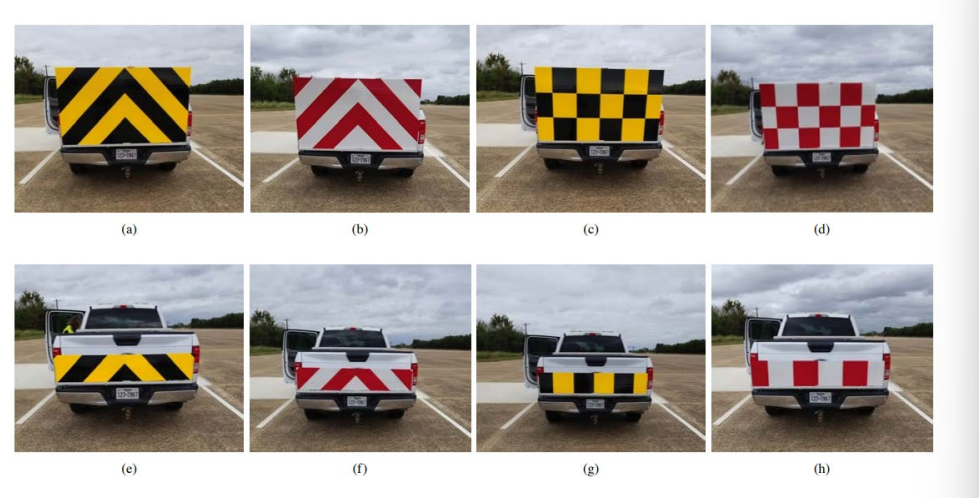
AAA report researches safety for towing and roadside techs
By onAnnouncements
A new AAA Foundation for Traffic Safety (FTS) report researches and provides suggestions for how tow trucks and other roadside service vehicles (RSVs) can best safely operate in a wide range of roadway environments and conditions.
Towing and service technicians and other responders are at high risk of being struck by passing motorists while working at the roadside, the report says.
The fatal and serious injury rate is about 16 times higher for RSVs than for other industries, it adds.
The U.S. Occupational Safety and Health Administration (OSHA) database identified 106 cases of tow truck operators being killed or severly injured between 20202 and 2017, according to the report.
“Service vehicle warning lights are an important part of raising the conspicuity of roadside workers, alerting drivers of their presence well in advance,” the report says. “However, too much light or certain flash patterns can create glare or distractions for approaching motorists, among other effects.”
Roadway conditions can vary from sunny afternoons to a combination of darkness, smoke, fog, rain or snow, the report says.
“RSV visibility in these diverse operating conditions is paramount and static and flashing emergency or hazard vehicle lighting are common countermeasures to enhance the conspicuity of vehicles stopped or working on the roadside,” the report says.
Numerous factors can influence an approaching motorist’s ability to distinguish operational personnel from the rest of the visual scene, it says.
The FTS study focuses on a review of other available studies on the topic of RSV lighting and review state regulations that currently guide the selection of warning lights for roadside service vehicles.
The study found that several techniques are successful in drawing attention to a special-purpose vehicle, especially at night. This includes using lightbars with LED lighting, using a faster flash rate (typically 1 to 4 Hz), increasing the luminous intensity of the warning lights and increasing the amount of retroreflective sheeting on the vehicle.
It adds that replacing some of the amber lights with green or blue could help but it is unclear how much.
Increasing the complexity of flash patterns does not appear to be helpful to road users. However, alternating flash patterns (left/right “wig-wag”) were generally found to be better detected by drivers than simultaneous flashing of two or more lights.
“Alternating patterns also appear to improve the ability for drivers to detect other objects in the scene compared to random flash patterns,” the article said.
There also is evidence that displays with more than four lights may result in an increased level of discomfort glare.
The report says that higher intensity warning light displays have been found to have a greater attention-getting performance and are seen from a greater distance but in night conditions they have been found to increase disability glare. For this reason lower warning light intensity is recommended during nighttime to reduce discomfort glare and disability glare.
Higher mounting positions on the vehicle, above the driver eye height, may improve visibility of the vehicle, provided there is a consistent background contrast, the report said.
Inverted V (stripe) patterns appear to have less adverse impact on night visibility of personal on foot behind a vehicle than checkerboard patterns.
There is also some evidence that red and white markings are more distracting than black and yellow markings.
Researchers also found that state regulations related to the color of RSV warning lights or other properties are inconsistent state to state.
“States differ not only regarding the allowable warning light colors, but also regarding when warning lights are to be used,” the report says. “While amber lights are traditional in most states, several states have added additional colors such as blue or red—often with stipulations that these colors can only be used while standing at the roadside, loading a disabled vehicle, or blocking a lane. In several states, white lights can be used under the same circumstances as amber lights; in some cases, it is legal for an RSV to be equipped only with flashing white warning lights.”
Most states statues are silent about other key technical parameters such as luminous intensity, flash patterns and mounting locations.
“The most important take-away from prior research is that interventions intended to improve the long-distance visibility of special-purpose vehicles often appear to have adverse effects on the visibility of personnel near the vehicles,” The report said. “For example, increased RSV lighting
can increase glare, increase the time it takes for drivers to perceive the presence of a person on foot near the vehicle, and decrease the overall visibility of personnel on foot. Moreover, current work light
practices in the towing industry potentially exacerbate the problem of nighttime glare at towing scenes.”
IMAGE
Photo courtesy of Willowpix/iStock


